This post is part of my Type 2 Fun series, where I write about the less glamorous side of my outdoor adventures. Not familiar with the concept of Type 2 fun?
One of the quickest ways for a trip to turn into Type 2 Fun is to add rain.1 I don’t mind a drizzle on an otherwise nice day or even a heavy burst that clears up with enough time for everything to dry out before bed. It’s the extended rain that keeps everything at an irritating level of soggy that I find frustrating. Plus, backpacking tents are notoriously small, so there isn’t even anywhere to hang up your wet socks!
However, timing a backpacking trip around the rain requires either hubris or an incredible amount of flexibility in your schedule. When I planned a fall trip to Pictured Rocks National Lakeshore a few years ago, I reserved my backcountry campsites on New Year’s Day just to ensure I got my preferred dates. Forget the ten day weather forecast, I was at the mercy of the ten month forecast!
As the trip got closer and the forecast became more meaningful, I thought I had lucked out—the only rain was supposed to be overnight showers. I think most of us would prefer for inclement weather to happen while we are snoozing in our tents! It was a small consolation since I had mistimed the start of fall foliage in that part of the Upper Peninsula.
But after hiking the length of the park—42.5 miles over 3.5 days—I didn’t feel like I had lucked out with the rain. Here’s what I learned on that trip:
First, don’t hike between Chapel Beach and Mosquito River on a weekend. The crowds were jarring after having the trail mostly to myself and I couldn’t fully appreciated the colorful sandstone cliffs because I kept getting jostled at the overlooks.
Second, I really dislike packing up a wet tent in the morning. Like, really dislike.
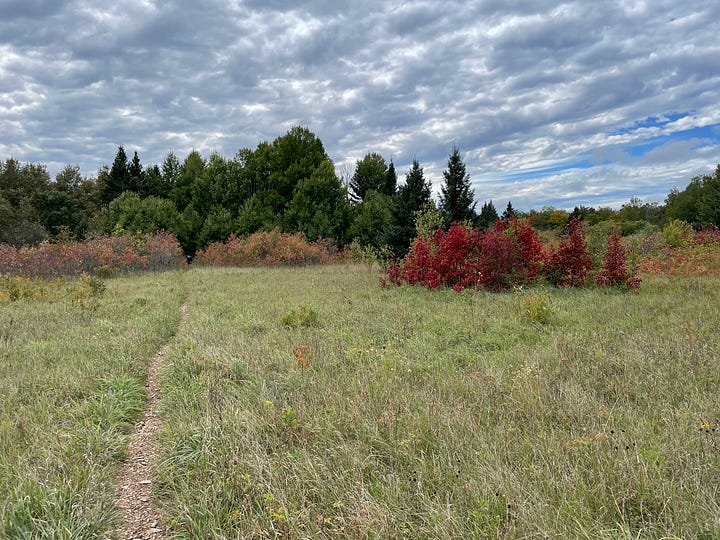
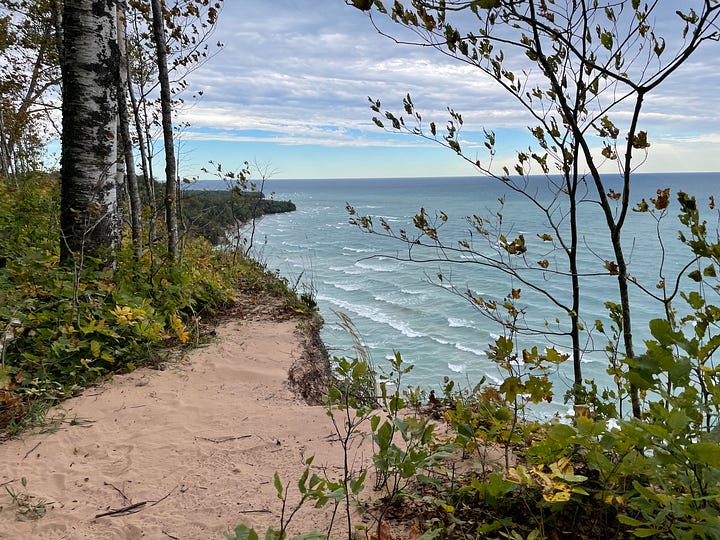
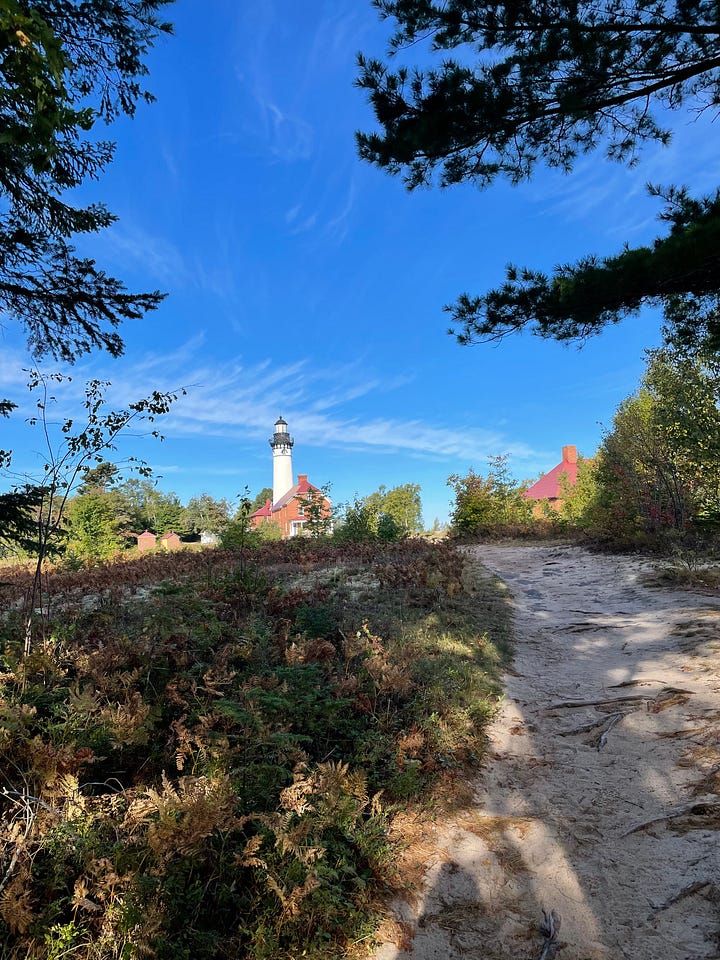

I started with a dry tent. The big excitement of the first day was that my baseball cap nearly blew off my head as I approached my final mile. I was the last to arrive at camp, having driven up from Milwaukee early that morning and taken a shuttle to the far end of the park before hiking seven miles to Au Sable Point. I chatted with the occupants of the other sites—nearly all who were on the final night of their trips—as we ate dinner around the unlit fire pit, before rain drove us all to our individual tents.
The next morning, I made a half-hearted attempt to shake the water droplets off my tent. With 13.5 miles to my next site, I didn’t have the luxury of waiting for the midday sun to dry it off for me, so I stuffed it into my pack, still wet. Every time I reached into my pack for a snack or to swap out layers, I felt the clammy fabric against my skin and was reminded that moisture was slowly leeching into all of my gear as a result of my impatience.
My night at Beaver Creek followed a similar pattern, though with the added discovery that it’s hard to pitch a tent tautly when the fabric is damp. The fly kept sticking to the mesh inner and my vestibules sagged—not ideal for withstanding the incoming storm. The rain held off until a little later in the evening, but came down with a vengeance once it began. It was one of those nights where you lay awake after dark wondering if your scan for widowmakers2 was sufficient. Though I stayed dry, my rainfly was completely saturated by the next morning.
I tried tapping the sides of the still-pitched tent to encourage the water to roll off. When that had diminishing returns, I shook the rainfly out like a sheet, only for my clothes to get sprinkled with droplets and the fly to pick up dirt that instantly turned into muddy rivulets. I gave up and once again, my tent went into my pack wet—I hoped that 10 miles wasn’t long enough for it to start molding.
The third night was more of the same—wind and rain not long after I set up—and by the time I broke down camp for the final time, I could barely look at my tent. It was dripping over everything in my pack and, to add insult to injury, adding unnecessary weight for me to carry. Water is usually the heaviest thing in my pack3 and I didn’t need more of it, especially in an undrinkable form!
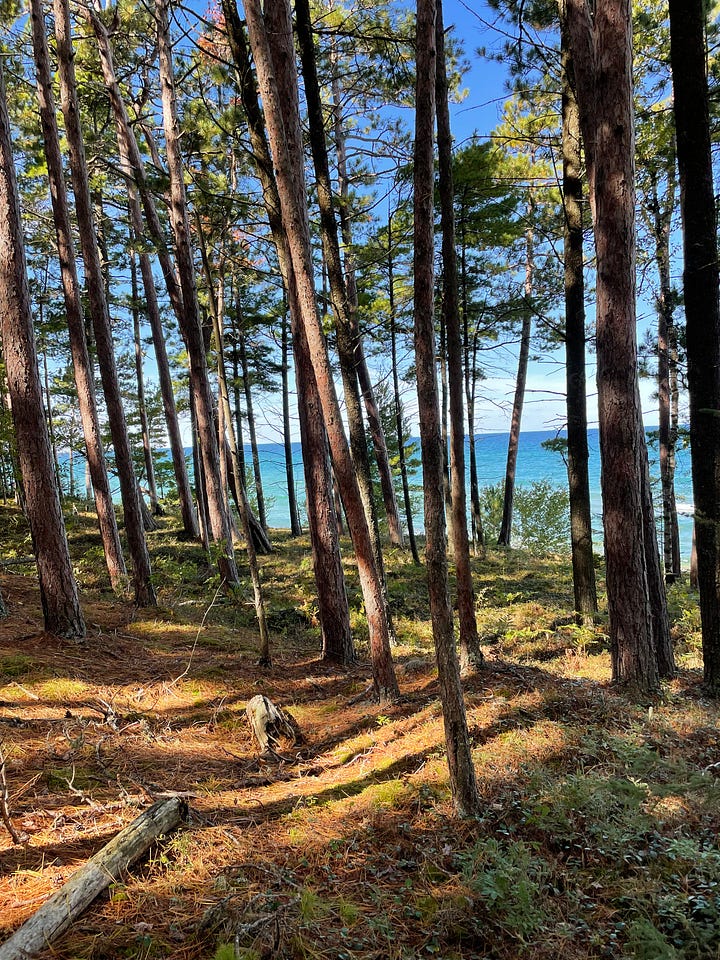
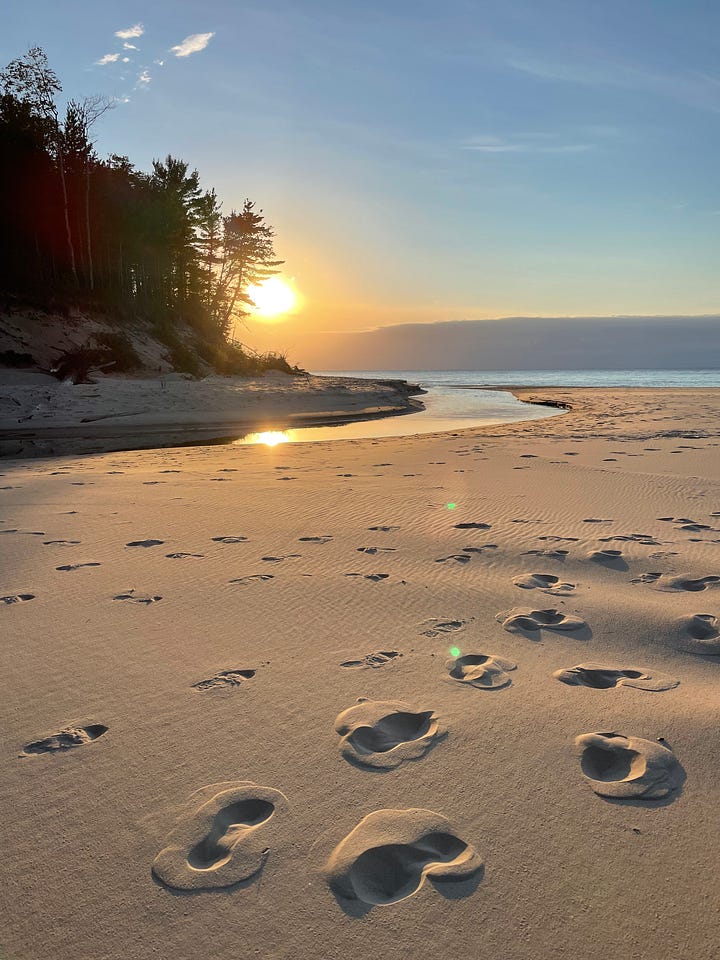
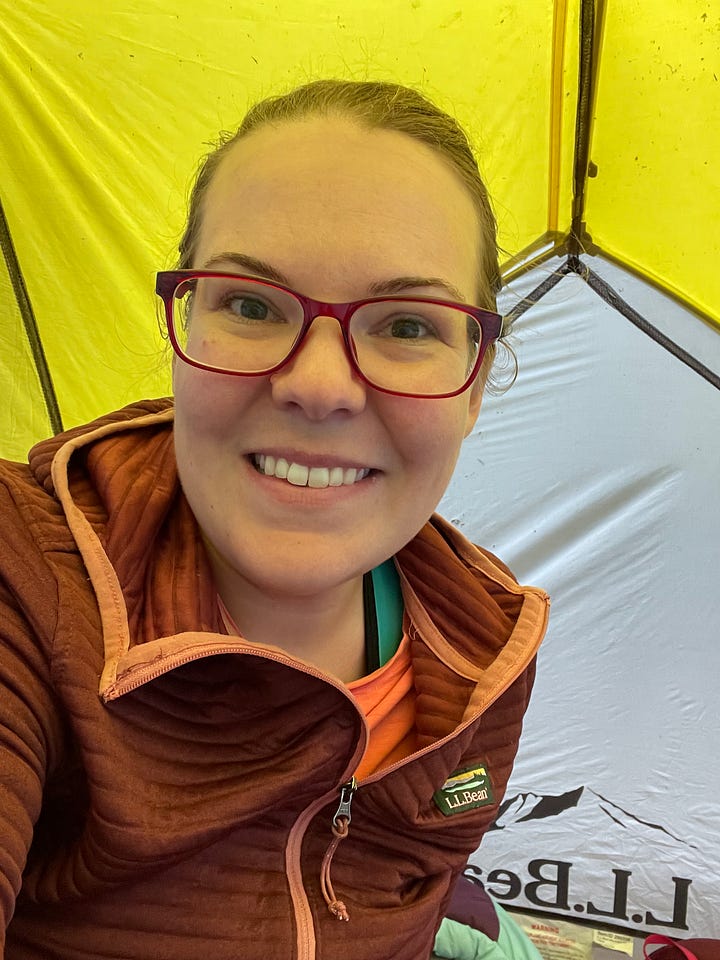
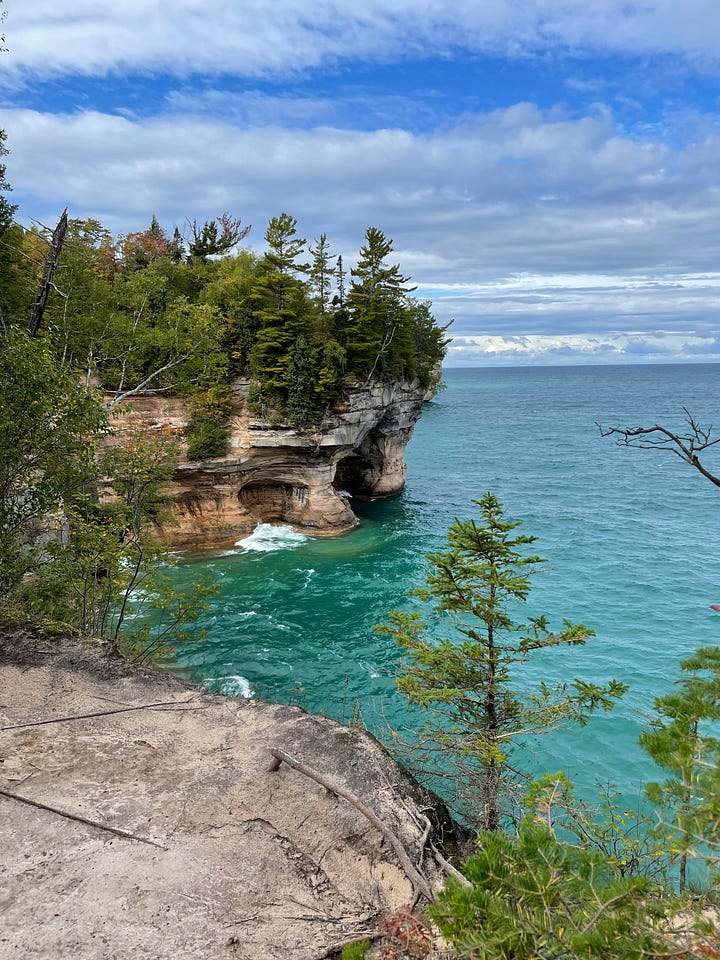
When I finally trudged into the parking lot at Munising Falls that afternoon, the first order of business was to kick off my hiking boots and slip into sandals. The second was to dry out my gear. I draped my rainfly over the headrests in the backseat of my car and arranged my tent footprint and mesh inner in the footwells, wet sides up. But even the five hour drive back to my parents’ house was not enough to dry out three nights worth of deluge.
Upon arriving on their doorstep, I shoved my soaking wet tent into my dad’s outstretched arms and begged him to deal with it because I couldn’t bear to look at it for another minute.4 Though the trip had overall been a success, the tent situation felt like a pop quiz I had failed spectacularly.
Logically, I know it was just rain! I didn’t expect three nights in a row of bad weather when I made the reservation months earlier and a wet tent shouldn’t be an indictment on my capability in the outdoors.
Ultimately, my frustration wasn’t just about the wetness of the tent, but about not having any way to mitigate the issue. I now carry a small, ultra-absorbent cloth to wipe down the outside of my tent, more for peace of mind than because I think it will actually be useful for mopping up after a storm. Sometimes you just want to rearrange the deck chairs on the Titanic so you can say you did something and carrying a cloth in my pack is a small weight penalty to pay for that.
Widowmakers are dead or broken branches. In a storm, they are more likely than a healthy branch to fall and can seriously injure anyone in their path.
A liter of water weighs 2.2 lbs and I typically start my day with 2 liters, so my water alone weighs about the same as my (smallest) tent, sleeping bag, and sleeping pad combined!
He dried it out on a clothesline in the backyard and I picked it up on my next visit to Milwaukee when I had a little bit more perspective on the situation.


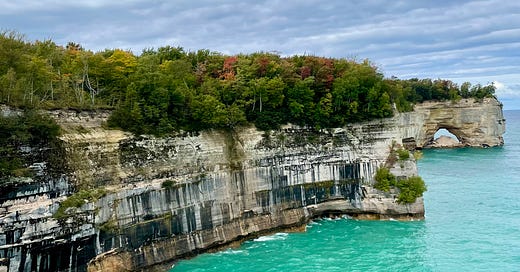



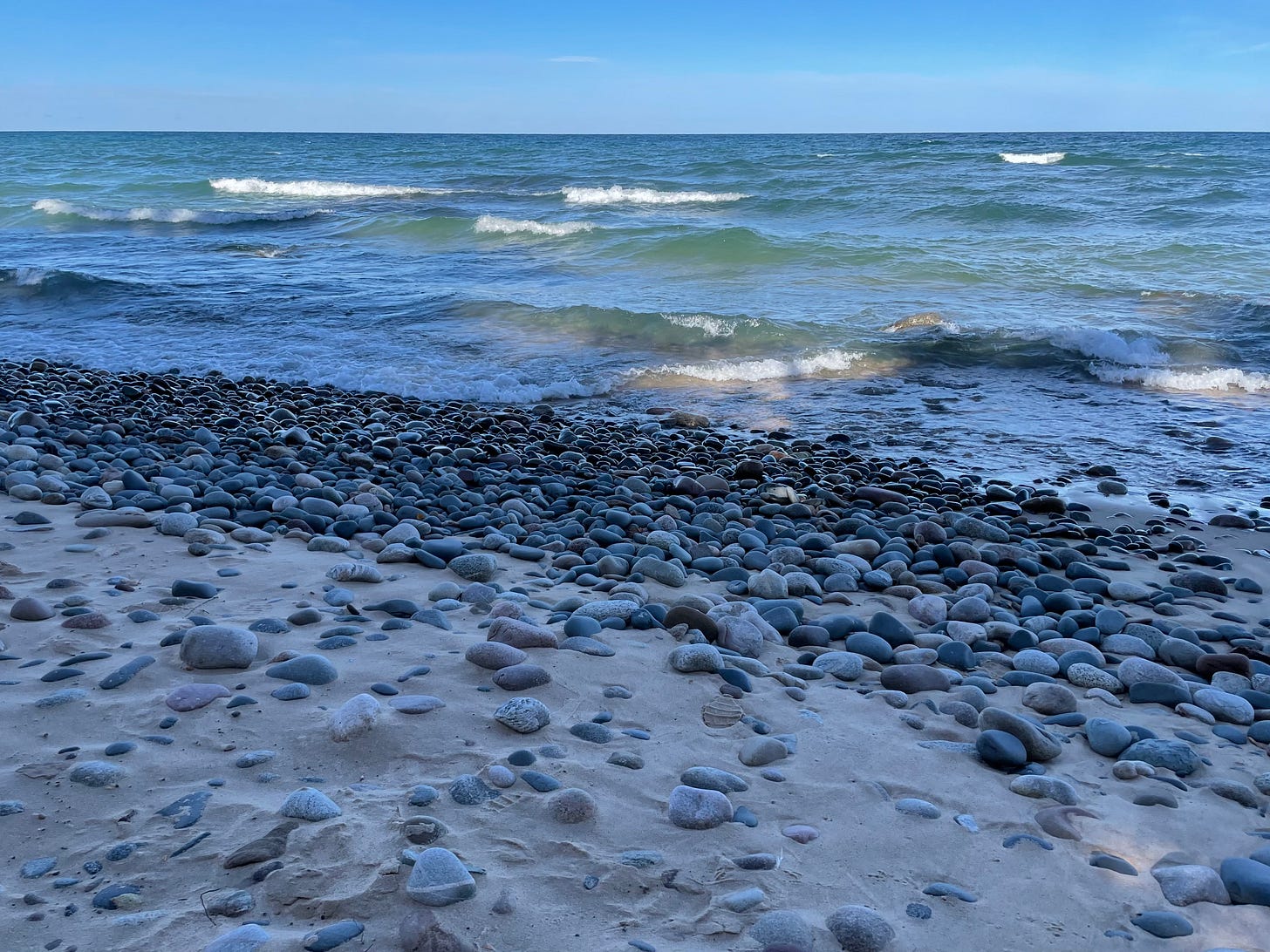
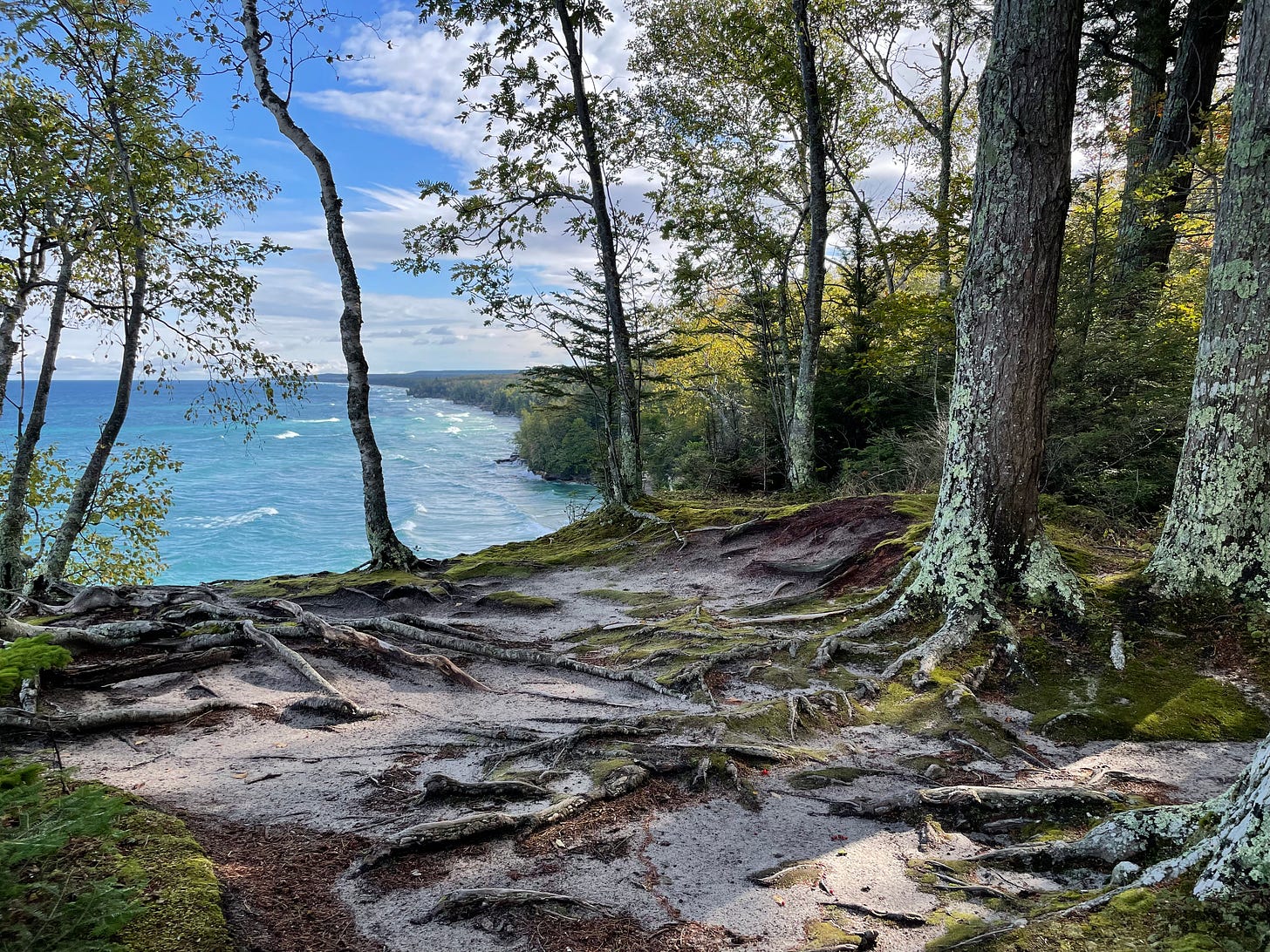
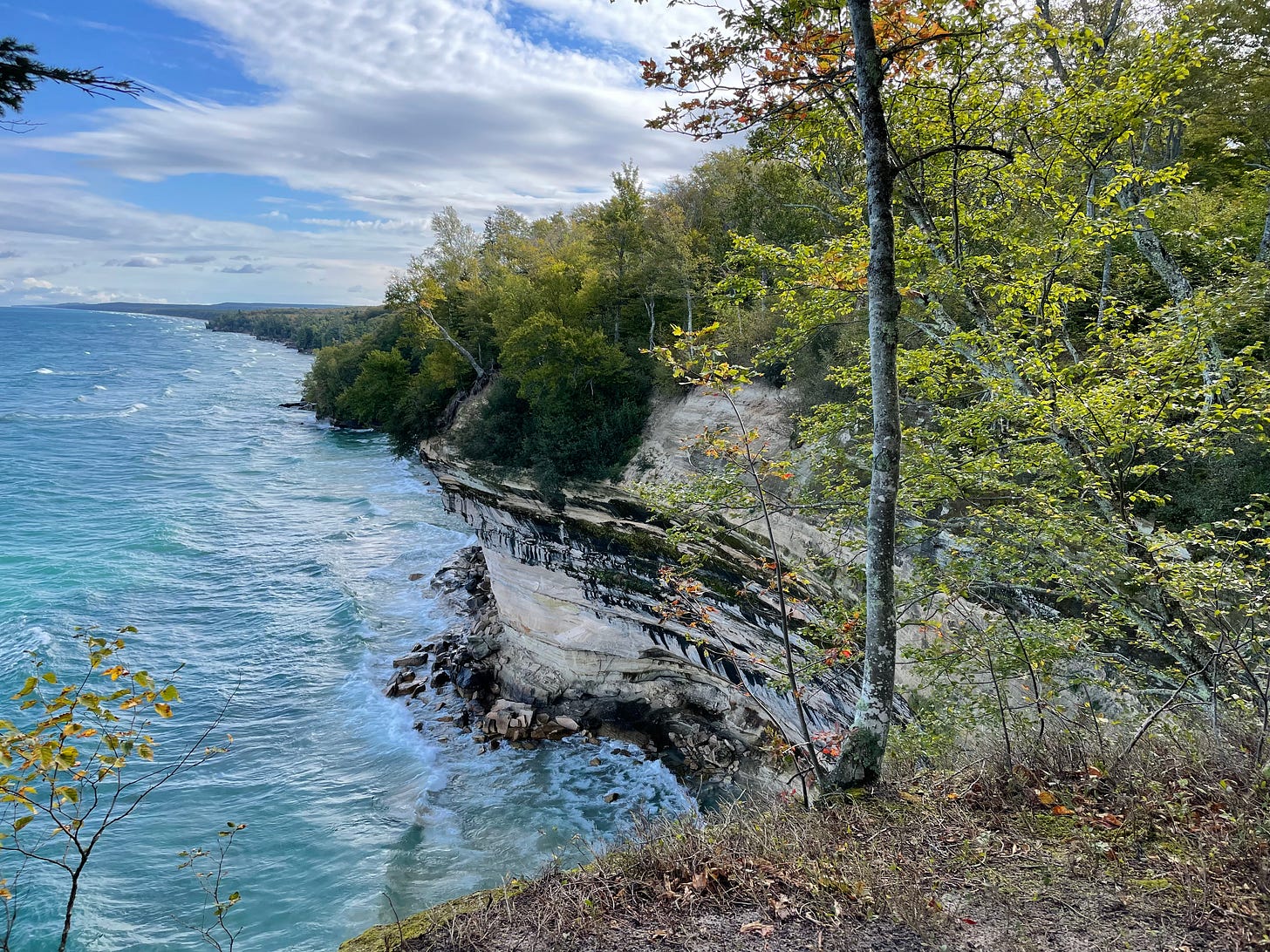

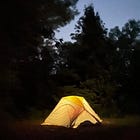
Beautiful photos!
The pictures look absolutely amazing! But yes, wet tents are no fun... I hope you have more luck this year :) I haven't had any terrible rain adventures lately - the tent usually had dried when I needed to pack up. During one of my trips last year, the most annoying effect of the rain was the slugs - they seemed to love the wet weather and appeared in huge numbers, crawling all over my tent, into my shoes, into my food, everywhere...